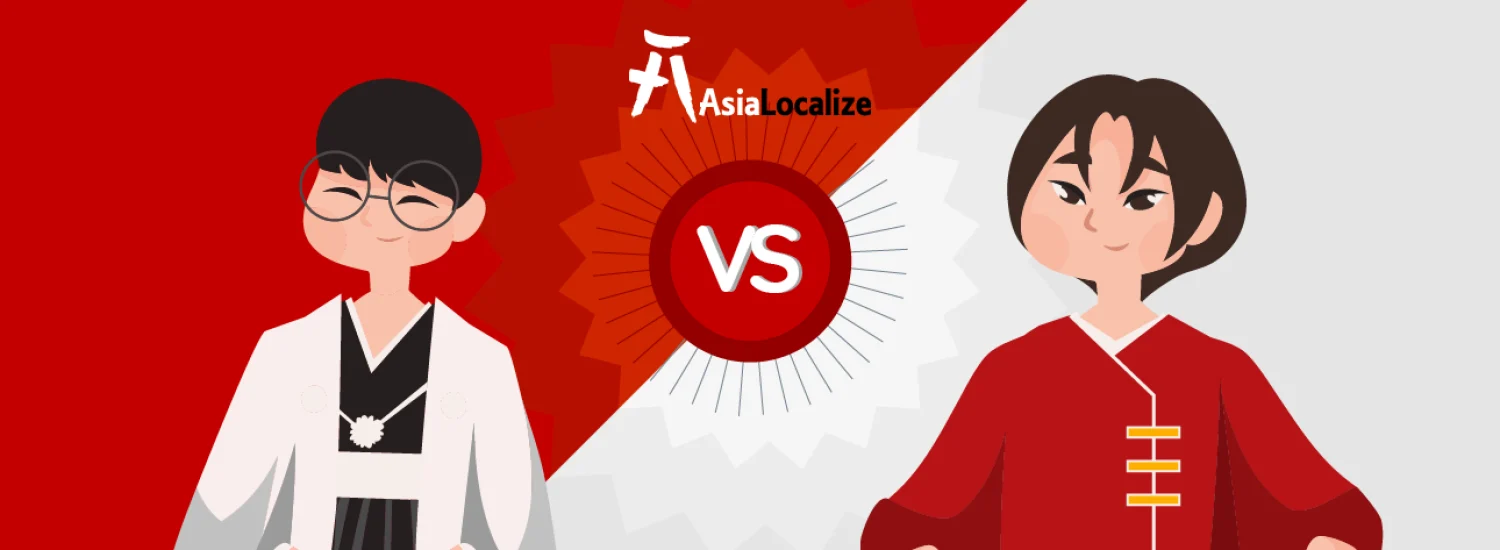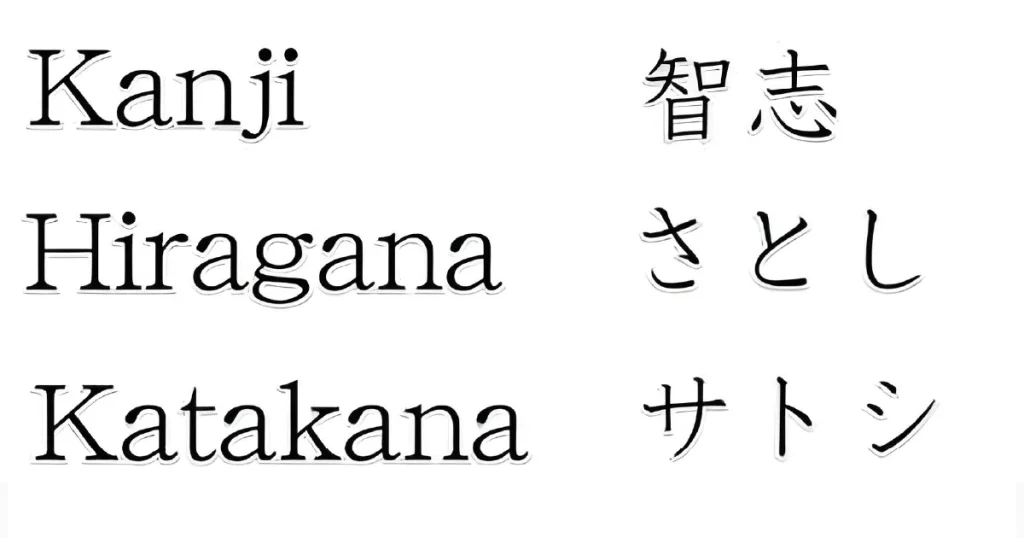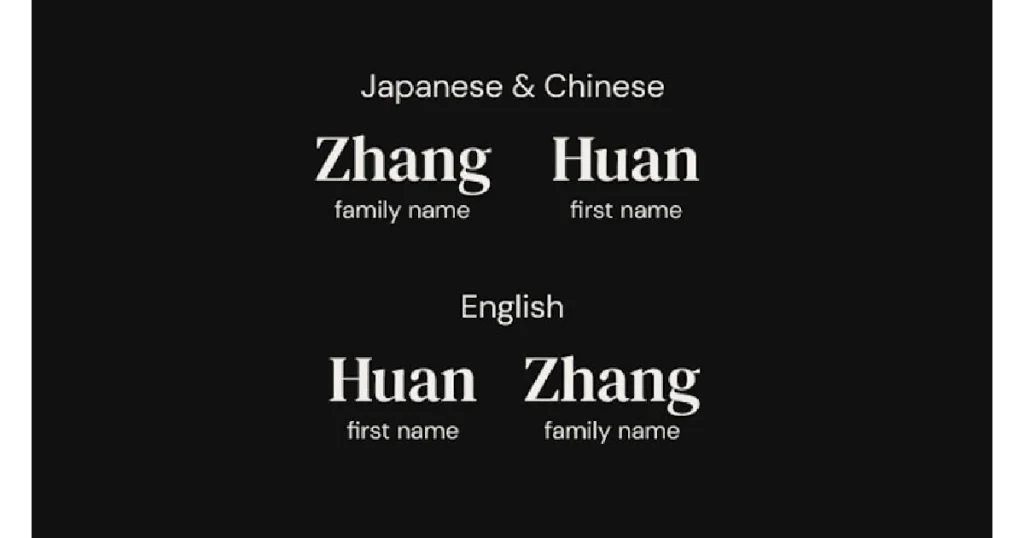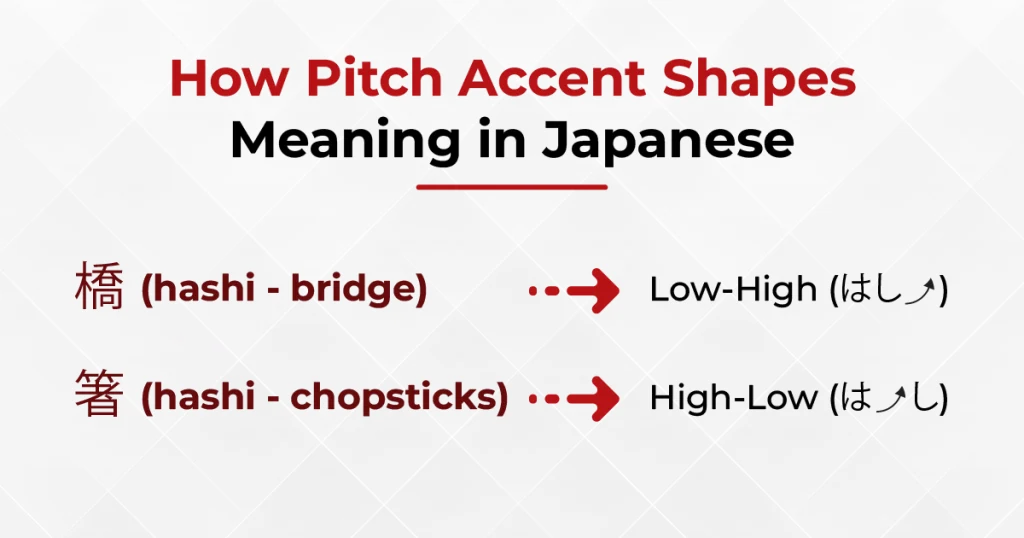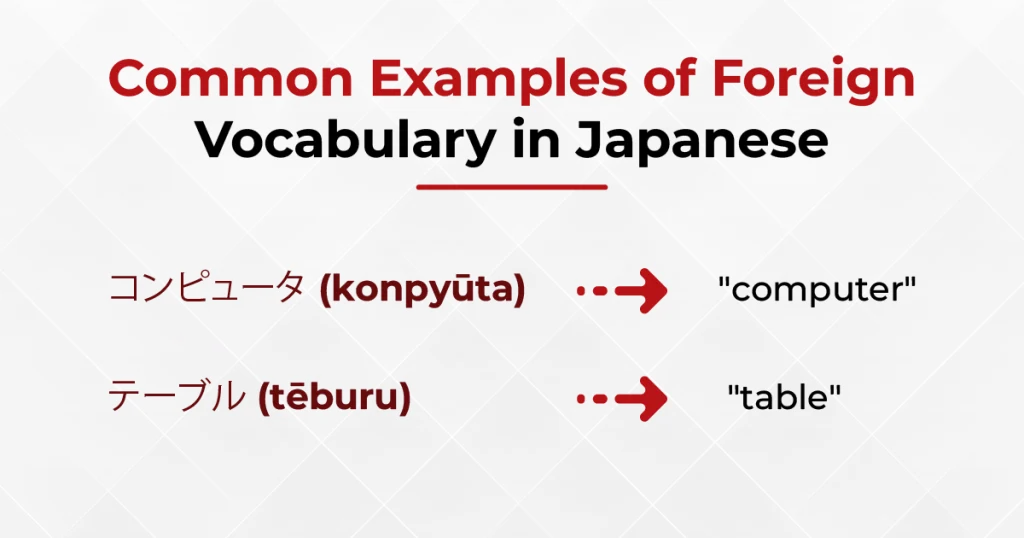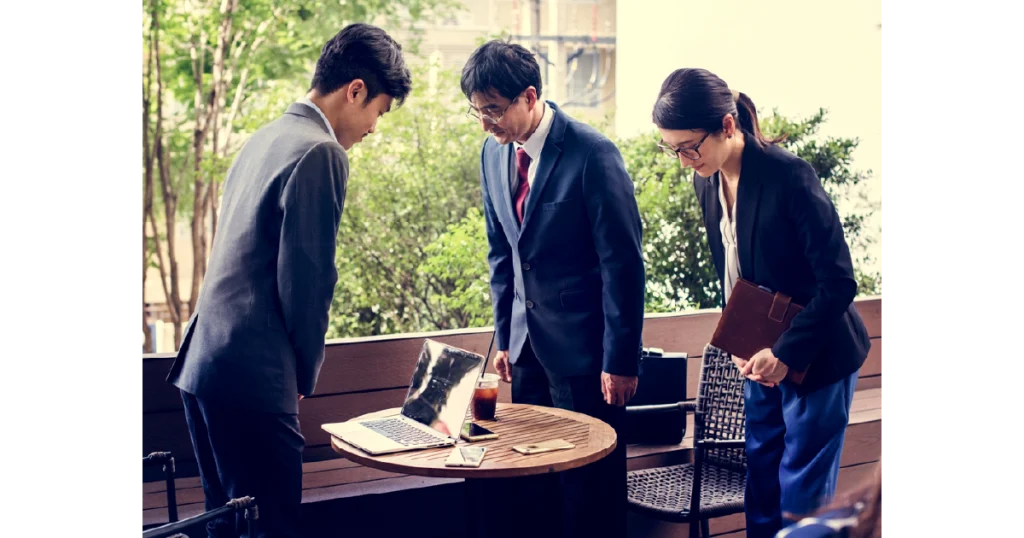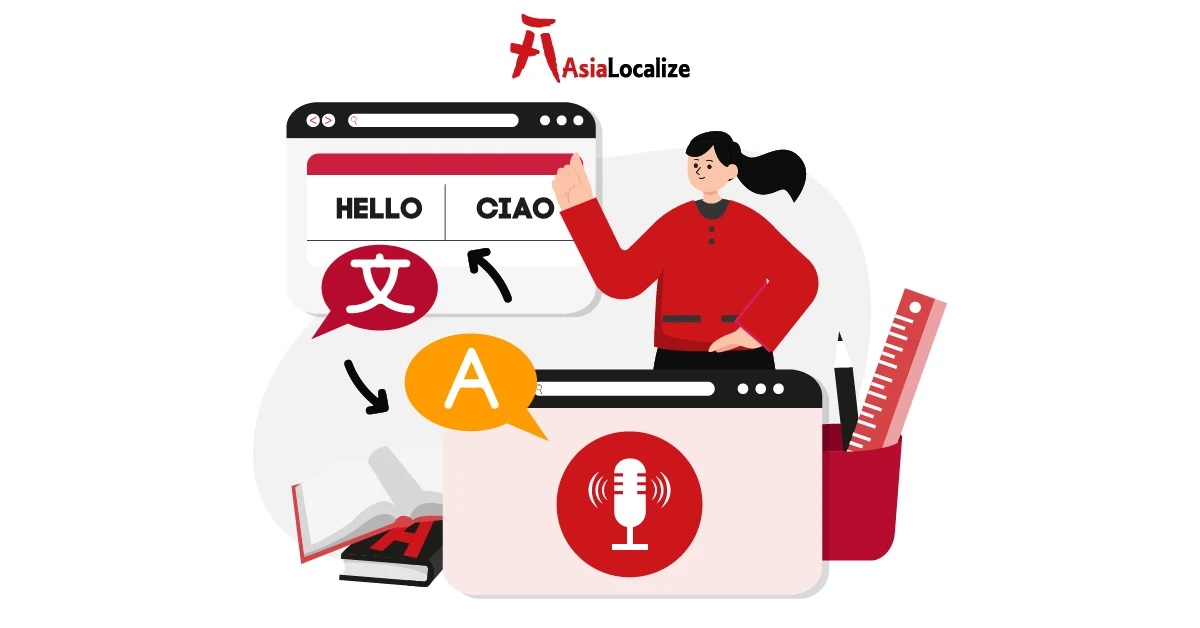Even though the Japanese writing system incorporates Chinese characters known as kanji, and both languages share over 50% of their characters, they remain distinct in structure, pronunciation, and usage.
For businesses planning to operate in Asia, knowing these distinctions between the Japanese and Chinese languages can significantly impact their upcoming negotiations, marketing strategies, customer relationships, and localization approaches.
Both Japanese and Chinese cultures have unique business etiquette, communication styles, and consumer behavior.
A one-size-fits-all approach simply won’t work when engaging with Chinese and Japanese audiences.
So, when it comes to Japanese vs. Chinese—which one aligns best with your goals? This blog post explores the key differences between the Japanese and Chinese languages to help you navigate these markets with confidence.
Chinese vs. Japanese Language: Writing Systems
Since the Chinese language is older than the Japanese, the latter have used Hanzi (Chinese writing system) until they have developed their own writing system.
When comparing Japanese and Chinese writing systems (Kanji vs. Hanzi), several core differences stand out.
Hanzi (Chinese Characters)
Chinese script employs logograms known as Hanzi, which represent words or morphemes. This system is highly complex due to the sheer number of characters, with thousands in everyday use.
Hanzi is widely adopted across Mainland China, Taiwan, and Hong Kong, serving as the backbone of the Chinese language.
Chinese has two writing systems: Traditional Chinese and Simplified Chinese.
Traditional Chinese is the original form of Chinese writing and is known for its complex structure, featuring intricate strokes. Traditional characters are still widely used in regions such as Taiwan, Hong Kong, and Macau.
Simplified Chinese was developed in the mid-20th century, primarily to increase literacy rates and simplify the learning process for new students of the language. Simplified characters are predominantly used in mainland China and Singapore.
Japanese Script
Kanji isn’t the only Japanese writing system! Japanese script is a hybrid that consists of three main scripts:
- Kanji
Derived from Hanzi, these characters represent words or concepts but are often simplified in Japanese. While many Kanji characters retain their original meanings from Chinese, the pronunciation and usage can differ significantly.
- Hiragana
This syllabary is used primarily for native Japanese words and grammatical functions. Hiragana allows for the representation of sounds and is essential for sentence structure in Japanese.
- Katakana
This is another syllabary, mainly used for foreign words, loanwords, technical terms, and onomatopoeias. Katakana often serves to indicate words that are not of Japanese origin, making it vital for modern communication in Japan.
How Did They All Evolve?
The introduction of Chinese characters to Japan began around the 5th century when trade and cultural exchanges brought these symbols to the islands.
Initially, these characters were used primarily for Buddhist texts and scholarly writings. Over time, the Japanese adapted Chinese characters (known as Kanji) to fit their own language.
This adaptation involved not just phonetic borrowing but also the creation of unique meanings, as many Japanese Kanji characters were combined or modified to express concepts specific to Japanese culture.
As the Japanese language developed, it became evident that the complexity of Kanji posed challenges to everyday communication, particularly among the common people who were less educated. For that reason, the Japanese created two phonetic scripts—Hiragana and Katakana—around the 9th century.
Hiragana was designed for native Japanese words and grammatical functions, providing a means to express the sound patterns of the Japanese language without the complexity of Kanji. Katakana, on the other hand, was primarily used for foreign words, scientific terms, and onomatopoeia.
Discover the languages spoken in China and plan for a grand market entry!
Linguistic Differences: Grammar, Pronunciation, and Vocabulary
While Chinese and Japanese use the same name order, which means the family name comes first, there are grammatical distinctions and sentence structure differences that influence the nuances of communication.
Japanese Grammar
Structure
The Japanese language follows a Subject-Object-Verb (SOV) structure. This means that the subject comes first, followed by the object, and finally, the verb.
Particles
Japanese extensively uses particles—small words that indicate the grammatical function of a word within a sentence. For example, particles like は (wa) and を (o) help clarify the subject and object, respectively.
Tenses and Politeness in Japanese
Japanese words often change based on tense, with different endings to denote past, present, or future. Additionally, levels of politeness also affect verb forms, adding complexity to sentence construction.
Chinese Grammar
Structure
Chinese employs a Subject-Verb-Object (SVO) structure, where the subject comes first, followed by the verb, and then the object. This is more straightforward in terms of word order.
Word Order and Meaning
Chinese relies heavily on the order of words in a sentence to convey meaning, along with auxiliary words, which serve as markers for tense and aspect. For instance, words like 了 (le) indicate a completed action.
Lack of Conjugation
In Chinese, verbs do not conjugate for tense. Instead, the language relies on the context and auxiliary words to indicate time.
Pronunciation and Tone: Monotone vs Tonal Languages
When it comes to pronunciation, Chinese and Japanese differ significantly in the way they utilize pitch and tone to convey meaning.
Chinese Pronunciation
Chinese is primarily a tonal language, which means that a word’s meaning can entirely differ depending on the tone used.
For example, the syllable “ma” can mean “mother,” “hemp,” “horse,” or “scold,” depending on the tone applied.
Mandarin Chinese, the most widely spoken dialect, has four distinct tones:
- First tone: High and level.
- Second tone: Rising, like you’re asking a question.
- Third tone: Starts mid, dips down, then rises.
- Fourth tone: Sharp and falling, similar to giving a command.
Japanese Pronunciation
In contrast, Japanese employs a pitch-accented system. This means that while pitch can determine word meanings, it does so differently compared to tonal languages.
Some Japanese words can change their meanings based on the pitch pattern of their syllables, but they do not have multiple tones like in Mandarin. Instead, they often follow a pattern of high and low pitches across syllables.
Vocabulary and Loanwords in Japanese and Chinese
In Japanese, foreign vocabulary is widely incorporated through the katakana writing system, primarily borrowing words from English, French, and other languages. These loanwords, known as gairaigo (外来語), are adapted to fit Japanese phonetics.
Chinese has a more conservative approach to incorporating foreign words. The language traditionally emphasizes the use of existing Chinese characters, which can pose challenges when trying to convey foreign concepts.
As a result, many foreign terms are translated into Chinese using existing characters that approximate the meaning or sound. For instance, the word for “computer” in Mandarin is “计算机” (jìsuànjī), which translates to “calculating machine.”
Japanese vs. Chinese Etiquette and Communication
When Comparing Japanese and Chinese cultures, there are so many similarities, but still, it’s like they’re coming from different worlds.
Although Japanese and Chinese people are polite and highly respectful, Chinese society may be perceived as less rigid than in Japan.
Elders and authority are respected in both communities, but interactions in Chinese culture can sometimes be more egalitarian, allowing for open dialogue across age and status. However, in Japanese culture, it’s pretty impossible to speak casually with someone with a higher social rank or someone older than you.
For example, both communities bow their heads when greeting someone new. However, the Japanese people are more strict when it comes to greeting someone who is older or with a higher social rank.
Another thing: the distance of the bow can tell a lot about the closeness of the relationship in Japanese society.
Business Localization: Adapting to Japanese and Chinese Markets
Why should you localize for Japanese and Chinese markets? The answer is simple: there are nearly a billion native Chinese speakers and 125 million native Japanese speakers.
It’s a door for endless opportunities!
However, localizing for such enormous markets requires a strategic approach and professional localization solutions. Why?
As you can see above, Japanese and Chinese have unique writing systems and cultural norms. Failing to navigate their challenges could not only prevent you from reaching your target audience but could even harm your reputation and drive them insane.
With a strict audience like the Japanese, missing politeness cues might trigger their anger and push them away.
That’s why we at AsiaLocalize only hire native Chinese and Japanese experts with a minimum of 5 years of experience to work on your projects. We localize to hit the mark, leaving no chance for errors to creep into your content.
Which Language Should You Localize For?
If your business operates in sectors such as gaming, anime, or automotive, prioritizing Japanese can be your winning horse. Japan and China are among the largest automotive markets in the world, ranking first and fourth, respectively.
On the other hand, if your focus is on sectors like eCommerce, manufacturing, or technology, then opting for Chinese makes strategic sense.
China is especially a powerhouse in eCommerce, with platforms like Alibaba and JD.com leading the way.
Embrace the Richness of Japanese and Chinese Languages
Expanding to Japan and China can bring infinite growth possibilities to your business, but it’s not a walk in the park. Complex writing systems and different cultural norms are some of the challenges that you will surely face in these markets.
A well-executed localization will be your only chance in such competitive markets.
We at AsiaLocalize utilize all our linguistic powers and cultural knowledge to ensure a smooth transition to the Asian market, supporting you across 120 languages with technology-based, human-powered language solutions.
| Get a foothold in the Japanese and Chinese markets now. Contact us for professional Japanese translation services or Chinese translation services today! |

